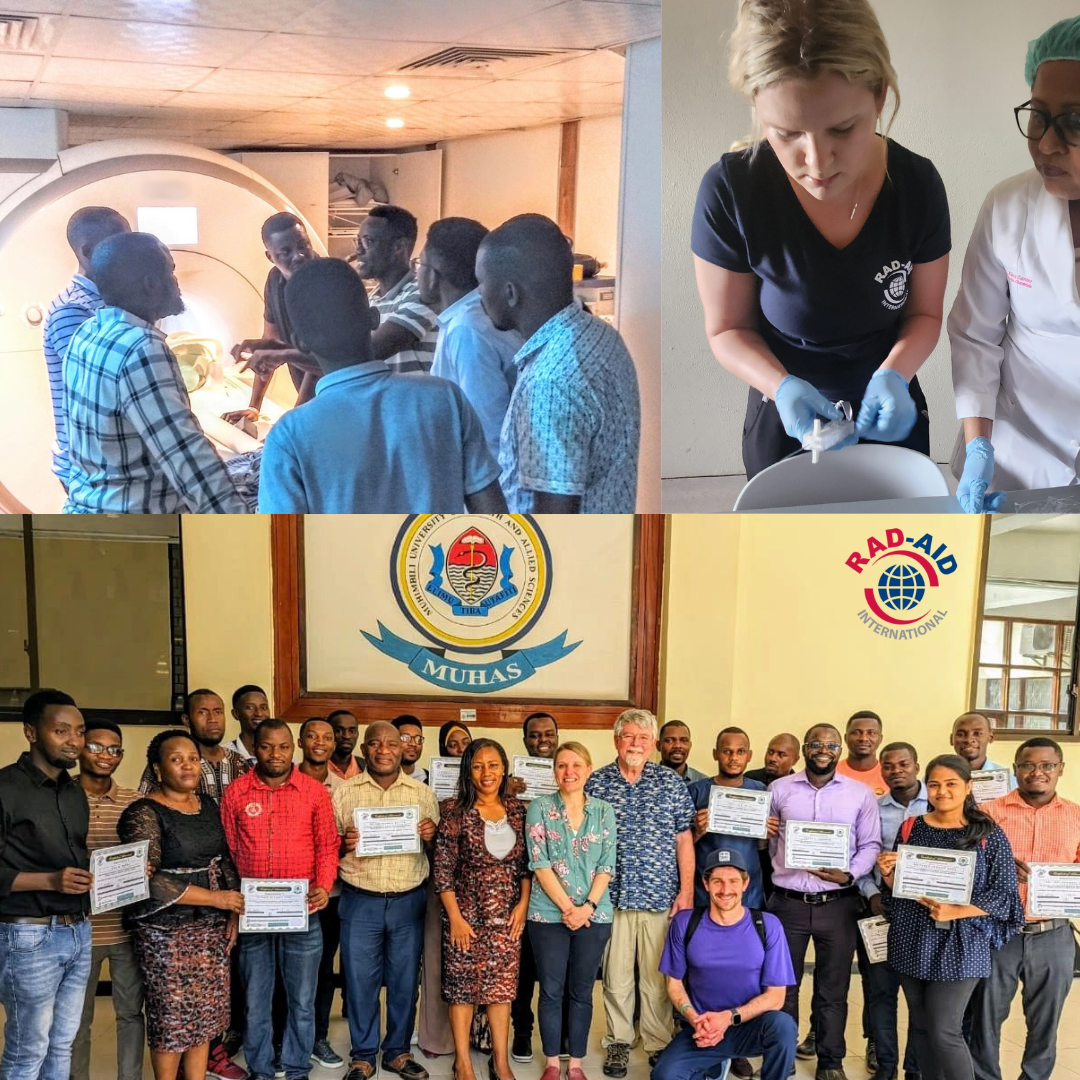Web Exclusive
Farther Afield
By Morgan Adams

RAD-AID offers an innovative approach to modern radiology barriers.
The World Health Organization (WHO) estimates that about 3 billion people are at risk for morbidity or mortality that could be treated or avoided if widespread medical imaging was available. In addition, the WHO estimates that between 70% and 80% of all medical problems can be diagnosed through basic X-ray and ultrasound. To help address this need, RAD-AID, a multidisciplinary nonprofit organization, is working to ensure that diverse populations across the globe have the appropriate radiology capabilities needed to improve health care outcomes. Founded in 2008 by Daniel J. Mollura, MD, RAD-AID is focused on implementing medical imaging and radiology in underserved populations and hospitals around the globe. RAD-AID does this by helping preexisting hospitals use and maintain reliable radiology technology, which includes training hospital staff to operate the radiology equipment effectively.
RAD-AID takes pride in tailoring its methods to each hospital. Their trademarked Radiology-Readiness Assessment (RRA) is the key to this approach. “All of our projects start with a Radiology-Readiness Assessment,” says RAD-AID CFO Lauren F. Kulinski, RT(R)(MR), MRSO. Whether it be adapting to the evolving needs of specific hospitals or the changing infrastructure surrounding them, the RRA is vital in evaluating sites and gauging the best next steps to take. “All of the solutions we implement are trying to keep the goals in mind of each individual site,” Kulinski adds.
The RRA looks at a site’s current facilities and their goals. Included in the RRA is an analysis of the site’s existing infrastructure (namely roads and telecommunications), availability and reliability of current electrical equipment and outputting, as well as the availability of trained, experienced health care professionals and radiologists, laboratory testing to complement imaging findings, and treatment for anything detected by radiology. RAD-AID uses this information to develop a plan best suited to the site.
“[The RRA] is different than a needs assessment because a lot of low-resource hospitals around the world need almost everything,” Kulinski says. Instead, the RRA takes a comprehensive look at what the hospital is ready for. RRAs help RAD-AID holistically understand the unique readiness of a location and more efficiently begin providing services and equipment, as well as revisit its programs to conduct further analysis with the hopes of optimizing a site’s fluid situation. From there, RAD-AID can work together with the sites to achieve their goals through education, technology upgrades, and equipment donation.
In Action
A good example of the RRA in action is RAD-AID’s work in Ghana and Nepal—two vastly different situations that have been significantly assisted by the RRA. The RAD-AID Ghana timeline began in 2012 when the RRA was originally conducted. When the RRA found that Ghana had the capacity to carry out medical imaging but not properly view and assess it, a PACS readiness program was determined to be the best next step for the site. After implementing PACS and training staff in 2013, the Ghana site debuted its radiology information system in 2018. Following additional RRAs, the site has since added a nuclear medicine program, breast imaging ultrasound training, and a distance learning program.
In Nepal, the RRA was initially conducted in 2014; however, following the 2015 earthquake and the significant changes that occurred, RAD-AID conducted another RRA to reassess the Nepal site’s readiness and reestablish a strong radiology presence in the hospital.
The RRA is just the first of five steps RAD-AID uses to implement radiology technology. After the RRA is conducted, RAD-AID moves into the planning phase, where they develop an individualized program based on the RRA’s results. Once a program is implemented, RAD-AID assigns volunteers, which Mollura calls “the strength of the organization.” Since its inception, RAD-AID has grown from five volunteers in 2008 to over 17,000 today. These volunteers are currently working in 44 countries and over 100 hospitals around the world. Volunteers can range anywhere from radiologists to informatics specialists and will often be assigned to train and educate hospital staff on new technology. However, there are no requirements to volunteer; RAD-AID welcomes anybody who is ready to help.
While RAD-AID’s main goal is helping low-resource areas, Mollura emphasizes that RAD-AID is “always innovating for the future.” Whether it is creating mobile radiology clinics or finding new ways to teach hospital staff about equipment, RAD-AID is revolutionizing how the world accesses radiology health care.
One example of RAD-AID’s innovative approach is its tele-ultrasound technology, which allows radiology professionals to teach hospital staff how to conduct an ultrasound. Educators in one country can see the ultrasound probes and the ultrasound image in another country, allowing them to help the students improve their ultrasound skills.
RAD-AID has also been experimenting with its new IR procedure simulator. This technology provides students with a risk-free, simulated environment to practice a procedure before performing it on actual patients. “This is particularly helpful in regions where supplies may be limited,” Kulinski says. This is yet another example of RAD-AID adapting to the limitations of each site.
When asked to describe one of their typical sites, Mollura says, “There is no set answer to what a facility looks like because, in many cases, they're doing the very best they can with very little, and they're adjusting to their local circumstances.” This idea is fundamental to RAD-AID’s mission. Thanks to their RRA and constant innovation in the education and implementation of radiology technology, RAD-AID is able to provide unique assistance to underserved populations around the world.
— Morgan Adams is a freelance writer based in the Pittsburgh area.

